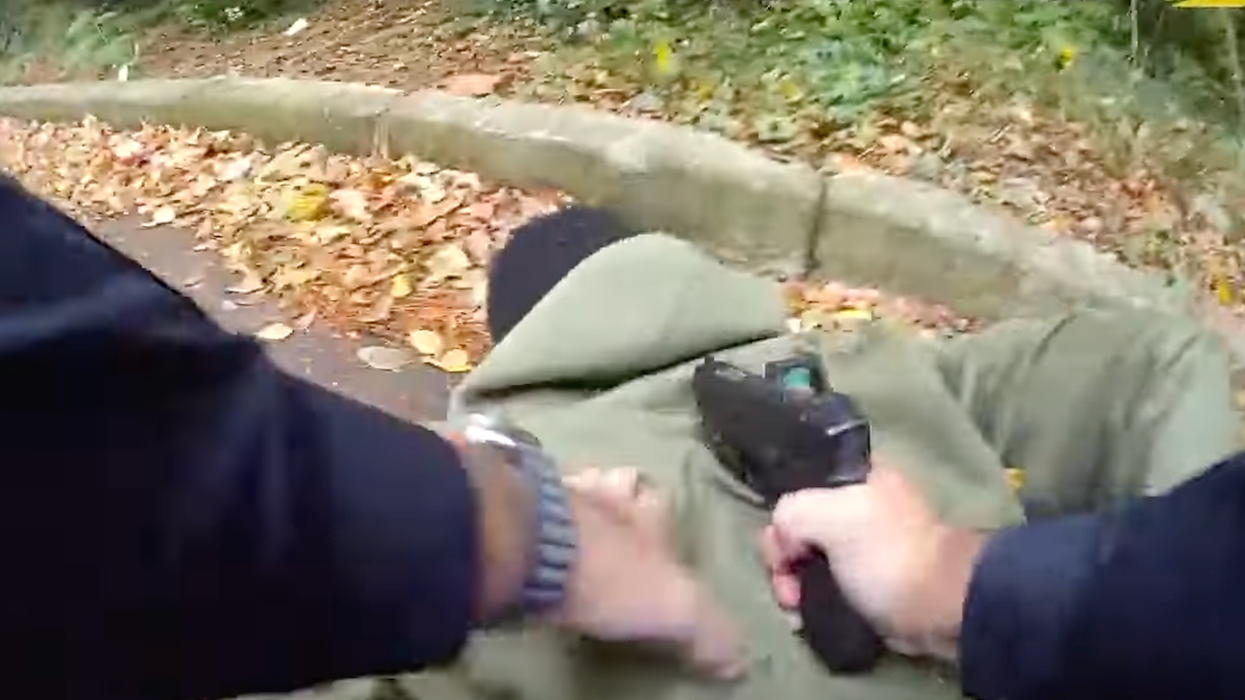
© 2025 Blaze Media LLC. All rights reserved.
What's the Story Behind the Massive, Mysterious Concrete Arrows Scattered Across the Country?
January 13, 2014
Have you seen them?
If you're like most Americans, you probably don't know that there are massive concrete arrows scattered all across the country -- from California to New York.
 Gas-powered beacons accompanied the arrows (image source: faa.gov)
Gas-powered beacons accompanied the arrows (image source: faa.gov)
So what's the story?
As it turns out, the arrows are leftovers from the Transcontinental Air Mail Route, which was founded in the early days of aviation and airmail delivery.
The concrete slabs were usually painted bright yellow and were used as markers that could be seen from the sky to help direct pilots flying from San Francisco to New York City. The arrows, which were usually installed 10 miles apart, were also accompanied by a gas-powered beacon, according to a recent story in the Reno Gazette Journal.
The pilots, who usually flew open cockpit biplanes, were generally former military men.
The city of Reno, Nev., for example, in the early days of airmail boasted of a young former Royal British Flying Corps pilot named William Blanchfield.
Here’s how the Nevada State Journal described the pilot:
During the month of November 1922, Blanchfield made his phenomenal run from Elko on the wings of a hurricane. The thermometer registered 16 degrees below zero at Elko and the field manager there told him it was impossible to make the flight. But Blanchfield, with that soldier tradition of generations, demurred. He said that the mail must go. And he won. But the fight he made with the blizzard is still talked about in aviation circles.
And it appears the Nevada State Journal account was the norm rather than the exception. Indeed, the history of the early days of air delivery is rife with tales of crash landings, blizzards and windstorms.
In fact, many have compared the early fliers to the Pony Express riders of the later 19th century.
“These guys were flying in all kinds of weather,” Ben Scott, a retired pilot, told the Reno Gazette Journal. “Going through the canyons, they were practically running their toes down the river. So the arrows were there to help them navigate the route.”
At approximately 2,629-miles long, the Transcontinental Air Mail Route was built with 13 stops where crews could be relieved and pass off their mail deliveries.
Stops included Elko and Reno, Nev.; Bellefonte, Pa.; Cleveland, Bryan, Ohio; Chicago; Iowa City, Iowa; Omaha, Neb.; North Platte, Neb.; Rawlins, Wyo.; Rock Springs, Wyo.; and Salt Lake City.
 The type of plane that was used to make the deliveries (image source: faa.gov)
The type of plane that was used to make the deliveries (image source: faa.gov)
But the program didn't last long.
Three years after Congress commissioned the project in 1923, "the U.S. Postal Service surrendered the system to the Department of Commerce, which would later decommission it in the wake of technological advances in radar and radio systems," the Daily Beast notes. "By the 1940s, the giant guiding arrows had grown outdated, and their steel towers were donated to the war effort."
Oddly enough, several historians in the Reno area had never even heard of the arrows until recently.
And in response to the re-discovery of the decades-old relics, some of the Reno locals are making an effort to preserve the concrete slabs as historical landmarks.
 The rundown and forgotten markers as they appear today (Image source: Aviation Archaeological Investigation & Research)
The rundown and forgotten markers as they appear today (Image source: Aviation Archaeological Investigation & Research)
You can read more about them over at the Reno Gazette Journal.
--
Follow Becket Adams (@BecketAdams) on Twitter
This post has been updated.
[related]
Want to leave a tip?
We answer to you. Help keep our content free of advertisers and big tech censorship by leaving a tip today.
Want to join the conversation?
Already a subscriber?
more stories
Sign up for the Blaze newsletter
By signing up, you agree to our Privacy Policy and Terms of Use, and agree to receive content that may sometimes include advertisements. You may opt out at any time.
Related Content
© 2025 Blaze Media LLC. All rights reserved.
Get the stories that matter most delivered directly to your inbox.
By signing up, you agree to our Privacy Policy and Terms of Use, and agree to receive content that may sometimes include advertisements. You may opt out at any time.






